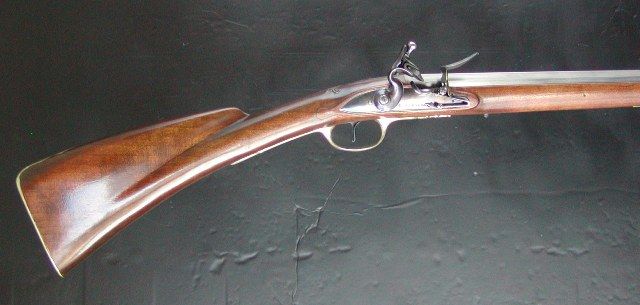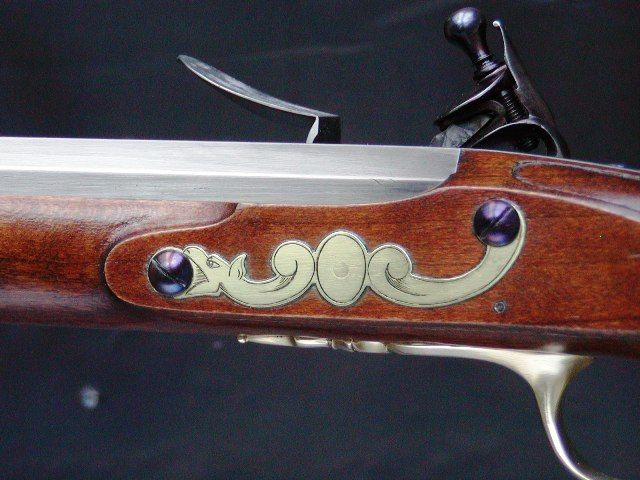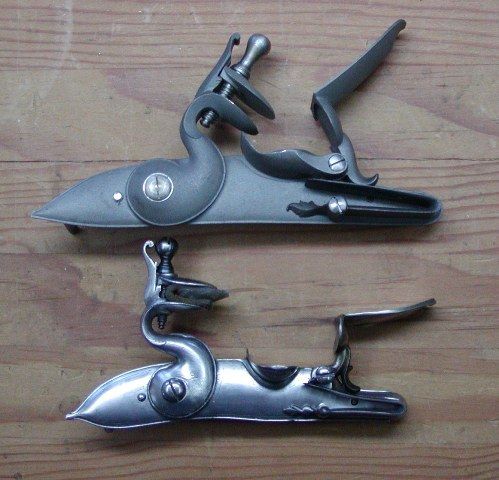"The lock plate of the gun being presented bears the name “Cookson” engraved in front of the cock. This undoubtedly refers to the maker, John Cookson. Three other guns of similar quality are known to have been built by John Cookson. All of these other firearms are multi-shot guns built on the Lorenzoni System. One of these Lorenzoni system guns is signed “John Cookson” and the remaining two are signed “John Cookson Fecit”. Stylistically the fowling piece in question compares very favorably to these guns. From this stylistic perspective, London seems the likely origin of each. In addition, the fowling piece bears London proof marks on the barrel. Although John Cookson is believed to have worked in London during the late seventeenth century, virtually nothing is known of him. The previously mentioned firearms are the only evidence which tie him to London. Interestingly enough, a John Cookson was present in Boston, Massachusetts by 1700 or 1701 and is listed as a whitesmith or gunsmith. Period sources indicate this man died in 1762 at the age of 89 years in Boston. A birth date of around 1673 can be therefore concluded. Many have suggested this John Cookson, in Boston, to be a relative of the London Gunsmith. This is certainly a possibility, however the John Cookson in Boston, may have been the same man who is supposed to have worked in London."
Jim Kibler










